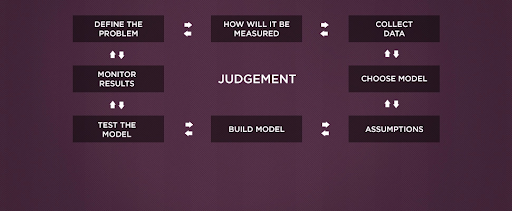Example of developing a sports betting model
As our article on how to create a betting model has received much good feedback, here’s a realistic example of designing, implementing, and testing a betting model in the Premier League that predicts wins, losses, and draw. Read on for information.

In the earlier article, we discussed how to construct a model for betting. Now go a step further and offer an example of how to do this.
We use a similar approach to the Actuarial Control Cycle for this example-a quantitative risk evaluation used by insurance companies. Building a betting model has five core features:
- Defining the problem
- Building the solution
- Tracking outcomes
- External forces
- Professionalism
Below we subdivide such features into further measures, providing an example to illustrate each level.
Please note that our model example is simple, and we encourage you to use it as the building blocks behind each stage’s perception of reality.
Phase 1: Specify your betting model’s target
We aim to determine the outcome of English Premier League games and see whether we can forecast results more accurately than the turf accountant.
Phase 2: Use metric
Since our goal is to determine the result of Premier League games, the statistic we are going to look at is the probability of winning a home team, winning an away team, and draw.
Phase 3: The data collection, classification, and adjustment
We’ve agreed to consider league games for data purposes only and make no changes.
The data gathered will be the scores and subsequent results from this season.
Phase 4: Pick the one you like
For our case of estimating the possibility of a match result, we are using a simple figure that resembles back on each team’s past three games.
The results can be estimated easily using a formula. Let’s say the home team won the earlier 3 games, while they won, drew, and lost one from away.
The ‘home win: draw: away win’ ratio will be 4:1:1 for a 4/6(66.66%) chance for a home victory, and 1/6(16.66%) for the other two games.
This is a simplistic model, but here, the aim is to concentrate on the phase rather than the actual model. Let’s name it the pattern of the 3 ratios.
Phase 5: Challenging Assumptions
Our ‘The pattern of the 3 ratios’ has a range of theories that need to checked separately:
- The size of the goal difference or goals scored does not affect winning probability.
- There is no discrepancy between home and away on the results.
- No outside circumstances are impacting the results – including cup games.
- No vital changes have made to the roster after the last 3 matches.
Phase 6: Develop the Betting model for sports
Once the data gathered, develop the model in an Excel file.
Phase 7: Examine the model
Check the ‘The pattern of the 3 ratios’ back to the Premier League games at Leicester in 2014. Remove the first 3 matches since they promoted last season and continue to uncover problems in the examination:
There are no draws in some situations. Leicester, for example, had lost their previous three matches while playing Hull away while Hull had won one and lost two. Should we presume, in this case, that the likelihood of a draw is zero? Or would we accommodate? This means we have to go through steps 4 to 6 again.
Will the results of the model be substantially different if we had used only home game against the home team and away games against the away team? What if we use 2, 5, or 10 instead of 3 games? What if we had also included cup games?
It will be essential to check these results using various hypotheses to see how sensitive our findings to each. The more specific the tests, the more accurate our research will be (coming back to step 5).
Phase 8: Analysis outcomes
Let’s say that this model was correct, and it must then be preserved as time goes on. This will put us back to the model starting point.





